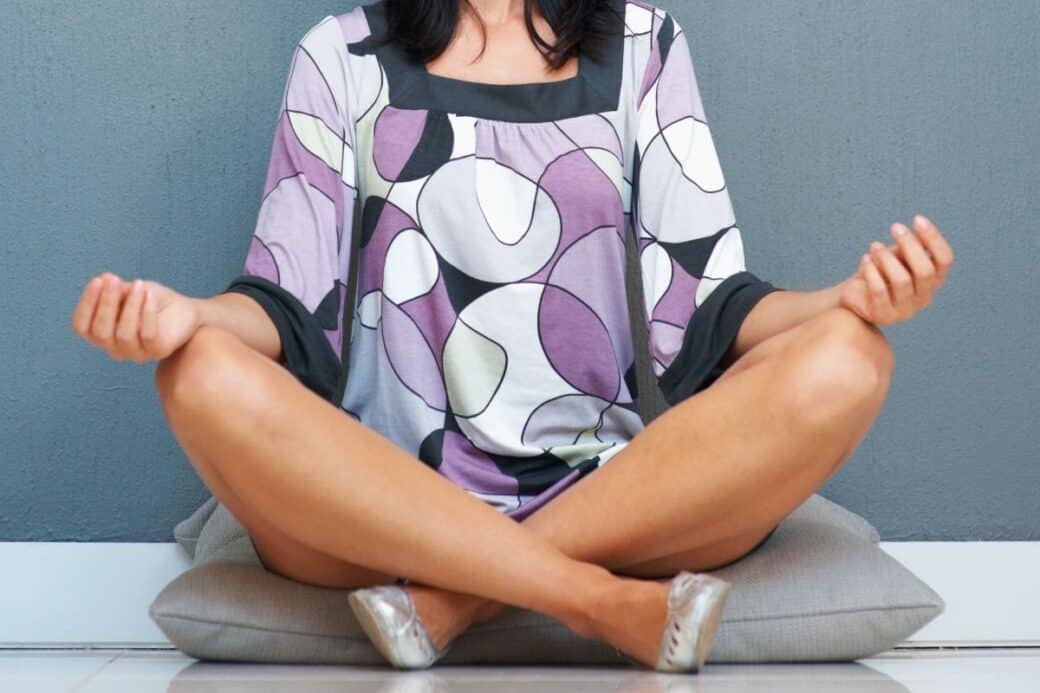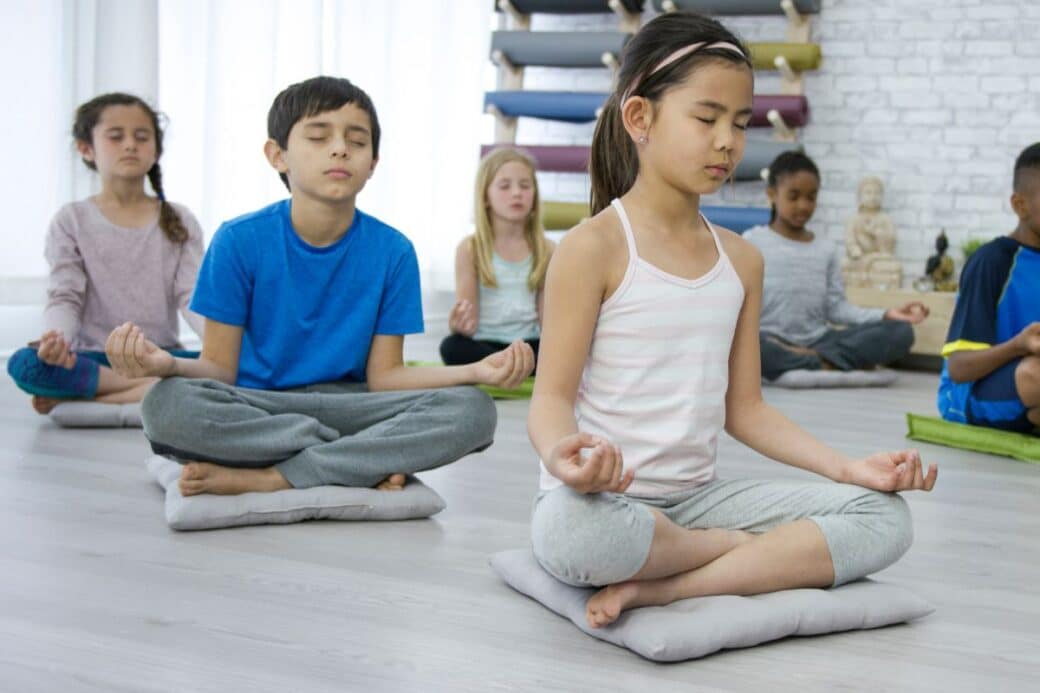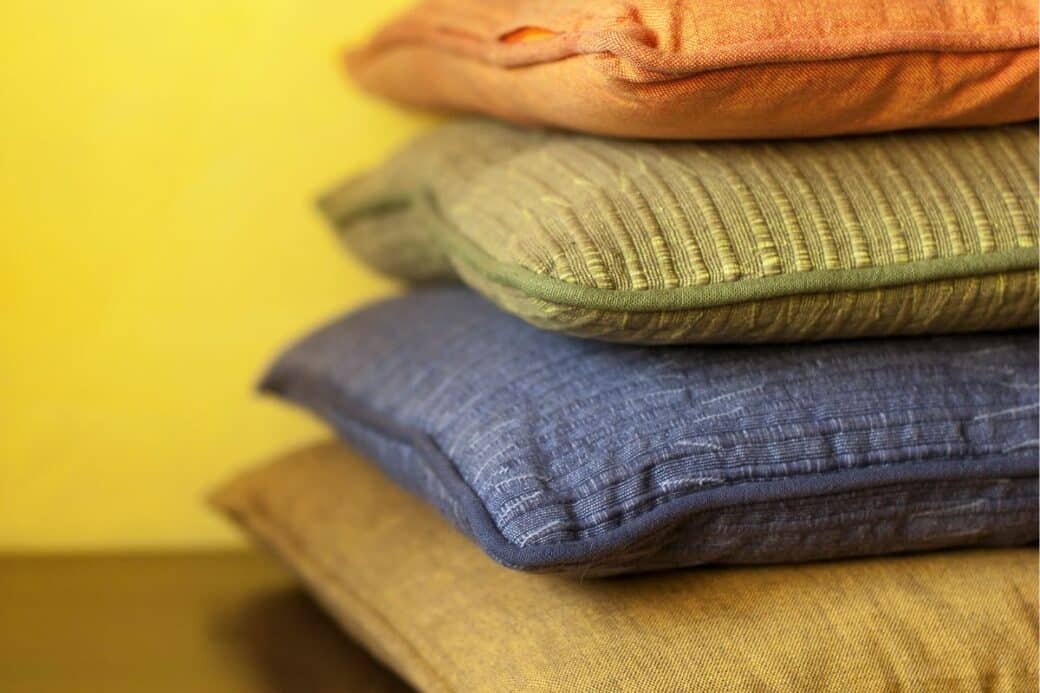Are you curious about the purpose and benefits of meditation cushions? Look no further! In this article, we will uncover the true essence of meditation cushions and why they are an essential tool for your meditation practice. Whether you are a seasoned meditator or just starting out, understanding the role of meditation cushions can greatly enhance your experience and provide you with the comfort and support you need. So, sit back, relax, and let us guide you through the world of meditation cushions.

What Is Meditation Cushions: Understanding Meditation Cushions
Definition of Meditation Cushions
Meditation cushions, also known as zafus or zabutons, are specialized cushions designed to provide support and comfort during meditation practices. They are specifically designed to help maintain proper posture and alignment, allowing practitioners to focus their attention inward without physical discomfort or distractions. Meditation cushions come in various shapes, sizes, and materials, catering to individual preferences and needs.
Different Types of Meditation Cushions
There are several types of meditation cushions available, each with its own unique design and purpose. The most common types are:
- Zafu Cushions: These round-shaped cushions provide elevation and firm support to the hips, promoting a natural curve in the lower back and aligning the spine properly. Zafu cushions are ideal for practitioners who prefer cross-legged or lotus meditation positions.
- Zabuton Cushions: Zabuton cushions are large rectangular cushions that provide cushioning and padding for the knees and ankles. They are typically used in combination with zafu cushions to create a comfortable and stable meditation surface.
- Crescent Cushions: Crescent cushions, also known as half-moon cushions, have a unique half-circular shape that provides support for the hips and lower back. They are suitable for practitioners who prefer a semi-reclined meditation position or require extra lumbar support.
- Bench Cushions: Bench cushions consist of a wooden meditation bench with a cushion attached to its surface. These cushions provide a slightly elevated and stable seat, making them ideal for practitioners who find it uncomfortable to sit cross-legged.
- Inflatable Cushions: Inflatable meditation cushions are portable and convenient options for practitioners who travel frequently or prefer a cushion that can be easily deflated and stored. These cushions can provide adequate support and comfort, making them suitable for various meditation positions.
History and Origin of Meditation Cushions
The use of meditation cushions dates back centuries and can be traced to ancient civilizations such as India, China, and Japan. In these cultures, meditation was an integral part of spiritual and philosophical practices. Sitting on the ground or on hard surfaces for extended periods of time during meditation often led to discomfort and distraction. Thus, cushions were introduced to provide practitioners with the necessary comfort and stability.
In India, cushions known as “asanas” were used during meditation to support the body and maintain proper alignment. These cushions were traditionally made from natural materials such as cotton, buckwheat husks, or kapok. Similar practices spread to countries like China and Japan, where meditation cushions evolved into the zafu and zabuton designs widely used today.
The popularity of meditation cushions continued to grow as mindfulness and meditation practices gained recognition in Western countries. Today, meditation cushions are not only embraced by practitioners seeking comfort and support, but they have also become a symbol of the practice itself.
The Anatomy of a Meditation Cushion
Materials Used in a Cushion
Meditation cushions are typically filled with natural materials that provide both support and comfort. Some common materials used include:
- Kapok: Kapok is a natural fiber obtained from the seed pods of the kapok tree. It is known for its buoyant and supportive quality, making it an excellent cushion filling.
- Buckwheat Hulls: Buckwheat hulls are the hard outer shells of buckwheat seeds. They are used as a filling material for cushions due to their ability to conform to the body’s shape and provide firm support.
- Cotton: Cotton is another popular cushion filling option. It is soft, breathable, and provides moderate support.
- Memory Foam: Memory foam is a synthetic material that molds to the shape of the body under pressure and retains its shape when the pressure is removed. It can provide excellent support and comfort for longer meditation sessions.
Shape and Structure of Meditation Cushions
Meditation cushions come in various shapes and designs to accommodate different meditation postures and individual preferences. The most common shapes include:
- Round: Round cushions, such as zafu cushions, provide elevation and stability for cross-legged or lotus meditation positions. They are designed to support the hips and maintain proper posture.
- Rectangular: Rectangular cushions, like zabuton cushions, are wider and longer, providing cushioning and support for the knees and ankles. They are often used in combination with zafu cushions to create a comfortable meditation surface.
- Half-moon: Crescent or half-moon cushions have a unique shape that supports the hips and lower back. This design is suitable for practitioners who prefer a semi-reclined meditation position or require extra lumbar support.
Size and Weight Considerations
When choosing a meditation cushion, it is essential to consider both the size and weight to ensure optimal comfort and portability. The size of the cushion should be appropriate for your body size and the meditation posture you prefer. The weight of the cushion should be manageable, especially if you intend to transport it regularly.
It is also worth mentioning that manufacturers may offer different sizes and thickness options for the same type of cushion. This allows practitioners to find the most suitable fit for their individual needs and preferences.

Cushion Types and Their Uses
Zafu Cushions
Zafu cushions are one of the most popular types of meditation cushions and are designed to support proper posture during seated meditation. These round-shaped cushions are typically filled with natural materials such as buckwheat hulls or kapok. Zafu cushions elevate the hips, allowing the knees to rest comfortably on the ground and supporting the natural curve of the spine. They are commonly used in cross-legged or lotus meditation positions. Zafu cushions provide stability and promote an upright posture, allowing practitioners to focus their attention inward with ease.
Zabuton Cushions
Zabuton cushions are large rectangular cushions that provide cushioning and support for the knees and ankles during meditation. They are often used in combination with zafu cushions to create a comfortable and stable meditation surface. Zabuton cushions are typically thicker and softer than zafu cushions, offering extra padding and insulation from the floor. They are especially beneficial for practitioners who prefer kneeling or seiza meditation positions. The zabuton cushion prevents discomfort and allows for longer meditation sessions without straining the joints.
Crescent Cushions
Crescent cushions, also known as half-moon cushions, have a unique shape that supports the hips and lower back. These cushions are particularly suitable for practitioners who prefer a semi-reclined meditation position or require extra lumbar support. The curved shape of crescent cushions helps maintain the natural curvature of the spine, relieving pressure on the lower back and promoting a comfortable sitting posture. Crescent cushions can be used in various meditation positions, including cross-legged, lotus, or kneeling postures. They are versatile and provide excellent support for practitioners with specific physical needs.
Bench Cushions
Bench cushions are designed for practitioners who find it uncomfortable to sit cross-legged or on traditional meditation cushions. These cushions consist of a wooden meditation bench with a cushion attached to its surface. Bench cushions provide a slightly elevated and stable seat, relieving pressure on the hips and legs. The elevated position promotes an upright posture and allows for better alignment of the spine. Bench cushions are ideal for practitioners with hip or knee issues or those who prefer a seated meditation position that doesn’t require prolonged cross-legged sitting.
Inflatable Cushions
Inflatable meditation cushions offer a portable and convenient option for practitioners who travel frequently or prefer a cushion that can be easily deflated and stored. These cushions are typically made from durable and lightweight materials that can withstand inflation and deflation multiple times. Inflatable cushions come in various shapes and sizes, offering options for different meditation postures. While they may not provide as much support as traditional filled cushions, they can still offer adequate comfort and portability.
Benefits of Using a Meditation Cushion
Improved Posture
Maintaining proper posture is essential during meditation as it allows for better alignment of the spine and reduces strain on the muscles and joints. Meditation cushions, such as zafu and zabuton cushions, provide support and elevation that help align the body. By sitting on a cushion, the pelvis tilts forward, creating a natural lumbar curve and reducing the chances of slouching. This improved posture not only enhances the meditation experience but also carries over into daily life, promoting overall spinal health and alignment.
Enhanced Comfort during Meditation
One of the primary benefits of using a meditation cushion is the enhanced comfort it provides during meditation. Sitting on a hard surface for an extended period can lead to discomfort and distract from the meditation practice. Meditation cushions, with their soft and supportive materials, offer a more comfortable sitting experience, allowing practitioners to focus their attention inward without being physically distracted. The cushioning effect of meditation cushions reduces pressure on the joints, making it easier to maintain a meditative state for a longer duration.
Increased Concentration
Physical discomfort can be a significant distraction during meditation, hindering concentration and deepening the meditative experience. By providing support and comfort, meditation cushions alleviate physical discomfort, enabling practitioners to concentrate more fully on their breath, thoughts, or other meditation techniques. When the body is properly supported and relaxed, the mind can more easily enter a state of deep focus and tranquility.
Maintenance of Body Temperature
Meditation cushions, particularly those filled with natural materials like buckwheat hulls or kapok, help regulate body temperature during meditation. These materials allow air circulation and prevent excessive heat buildup, keeping the body cool and comfortable. Additionally, the insulation provided by thicker cushions, such as zabuton cushions, helps prevent heat loss during long meditation sessions, ensuring optimal comfort throughout the practice.
Choosing the Right Meditation Cushion for You
Consideration of Physical Needs
When choosing a meditation cushion, it is crucial to consider any specific physical needs or limitations. Factors such as body size, flexibility, and any existing physical discomfort or injuries should be taken into account. For example, individuals with tight hips or knees may benefit from a higher and wider cushion to alleviate strain on these areas. Considering your specific physical needs will help determine the most suitable cushion size, shape, and support for your practice.
Your Preferred Meditation Position
Different meditation positions require different types of support and cushioning. If you prefer a cross-legged or lotus meditation position, a zafu cushion that provides elevation and stability for the hips is ideal. If you prefer a kneeling or seiza position, combining a zafu cushion with a zabuton cushion can provide the necessary cushioning and support for the knees and ankles. Consider your preferred meditation position and ensure that the chosen cushion adequately supports your posture.
Personal Aesthetic Preferences
While the primary function of a meditation cushion is to support and comfort your practice, it is essential to choose a cushion that resonates with your personal aesthetic preferences. Meditation cushions are available in various colors, patterns, and materials, allowing you to select one that aligns with your style and creates a calming and inspiring atmosphere in your meditation space. Feeling visually connected to your meditation cushion can enhance your overall practice experience.
Cushion Fill Options
The choice of cushion fill material can significantly impact your meditation experience. Experimenting with different fill options can help you determine which one provides the desired level of firmness, support, and comfort. Natural fill materials like buckwheat hulls and kapok are commonly used in meditation cushions due to their supportive and moldable qualities. Synthetic options like memory foam can also offer excellent support and contouring to your body shape. Consider trying different cushion fill options to find the one that suits your preferences and provides optimal support.
Understanding the Versatility and Adaptable Uses
While some cushions are designed for specific meditation postures, many cushions offer versatility and can adapt to various sitting positions. For example, crescent cushions can be used in a cross-legged, kneeling, or even a semi-reclined position. Zafu cushions can also be used in different postures, including a kneeling position by turning them on their side. Considering a cushion’s versatility can be beneficial if you practice different meditation techniques or prefer to explore different seated postures during your practice.
Proper Care and Maintenance of Meditation Cushions
Cleaning and Washing
Keeping your meditation cushion clean is essential for maintaining its quality and extending its lifespan. The cleaning instructions may vary depending on the cushion’s material and fill, so it is essential to refer to the manufacturer’s guidelines. In general, removable covers can be machine washed on a gentle cycle using mild detergent. It is recommended to air dry the covers to avoid shrinkage or damage. For cushions without removable covers, spot cleaning with a damp cloth and mild detergent is usually sufficient.
Air Circulation and Sun Exposure
To maintain the freshness and longevity of your meditation cushion, it is advisable to allow for air circulation and occasional sun exposure. After use, it is beneficial to remove the cover and allow the cushion to air out in a well-ventilated area. If weather permits, placing the cushion under indirect sunlight for a short period can help eliminate any moisture or odors that may be present. However, excessive exposure to direct sunlight should be avoided as it may cause color fading or fabric damage.
Storing Your Cushion
Proper storage of your meditation cushion can prevent damage and maintain its shape. When not in use, it is recommended to store the cushion in a clean and dry area. If the cushion has a removable cover, it can be removed and stored separately to protect it from dust or pests. The cushion should be kept away from sharp objects or heavy items that can compress the filling or alter its shape. Storing the cushion in a breathable fabric bag or a dedicated storage case can help preserve its quality and protect it from any potential damage.
Potential Issues and Solutions
Common Problems when using Meditation Cushions
- Discomfort or soreness: Some practitioners may experience discomfort or soreness when using a meditation cushion, especially during extended periods of sitting. This can be caused by improper cushion height, inadequate support, or individual physical factors.
- Slipping or instability: In some cases, meditation cushions may shift or slip during meditation, leading to distraction and discomfort. This can be attributed to a lack of grip between the cushion and the floor or an unstable cushion design.
Solutions and Alternatives
- Adjust cushion height or try different fill materials: If you experience discomfort or soreness, consider adjusting the cushion height to ensure proper alignment. Experiment with different fill materials to find the one that provides the desired level of support and comfort.
- Use a non-slip mat or rug: Placing a non-slip mat or rug underneath the cushion can help prevent slipping or instability. This provides a secure base and reduces the likelihood of distraction during your meditation practice.
How to Meditate Using a Meditation Cushion
Preparing the Meditation Space
- Find a quiet and comfortable space: Choose a space where you can practice meditation without interruptions. Make sure the temperature is comfortable, and the environment is peaceful and conducive to reflection.
- Set up your meditation cushion: Place your meditation cushion in a location that feels right for you. It can be on a mat, rug, or directly on the floor. Ensure the cushion is positioned to provide comfortable support for your preferred meditation posture.
Proper Sitting Techniques
- Sit with an erect spine: When sitting on a meditation cushion, align your spine in a straight and upright position. Avoid slouching or leaning to maintain proper posture and support for the whole body.
- Relax your shoulders and neck: Allow your shoulders to naturally relax and soften, avoiding any tension or strain. Release any unnecessary tension in your neck muscles, allowing your head to rest gently on your neck.
- Position your hands: Choose a hand position that feels comfortable to you. You can rest your hands on your knees, in your lap, or adopt a specific mudra (hand gesture) associated with your meditation practice.
Practices for Extended Comfort
- Take breaks if needed: If you experience discomfort or fatigue during longer meditation sessions, don’t hesitate to take short breaks. Stretching or gently moving your body can help relieve tension and reduce the strain on specific areas.
- Experiment with cushion placement: Adjust the position and angle of your meditation cushion to find the most comfortable and supportive placement for your body. Small adjustments to cushion height or tilt can make a significant difference in comfort during prolonged meditation.
Meditation Cushions and Different Meditation Practices
Cushions in Zen Practices
In Zen meditation, practitioners often use zafu cushions in conjunction with zabuton cushions. The zafu cushion provides the necessary elevation and support for the hips, while the zabuton cushion cushions the knees and ankles, creating a stable and comfortable seated position. This combination allows practitioners to maintain a firm and upright posture while focusing on their breath or engaging in other meditation techniques commonly practiced in Zen Buddhism.
Cushions in Vipassana Meditation
Vipassana meditation, also known as insight meditation, emphasizes mindfulness and observation of the present moment. During Vipassana meditation, practitioners may use various meditation postures, including cross-legged or kneeling positions. Zafu cushions, zabuton cushions, and crescent cushions can all be utilized in Vipassana practice, depending on individual comfort and support requirements. The primary goal is to find a posture that promotes stillness and alertness, allowing for focused observation of sensations and thoughts.
Cushions in Tibetan Buddhist Practices
Tibetan Buddhist meditation often involves a combination of mantra recitation, visualization, and deity meditation. In these practices, practitioners may adopt different postures, including full lotus or half-lotus positions, kneeling positions, or sitting on a meditation bench. Zafu cushions are commonly used to provide elevation and support for cross-legged or lotus positions, while zabuton cushions offer cushioning and stability for kneeling postures. The cushion choice depends on the specific practice and the individual’s comfort and support requirements.
Where to Purchase Meditation Cushions
Online Platforms
There are several online platforms that offer a wide variety of meditation cushions. Websites specializing in meditation and mindfulness accessories provide a convenient way to explore different options, compare prices, and read customer reviews. Online platforms also often provide detailed product descriptions and specifications that can assist in selecting the most suitable cushion for your needs.
In-Store Options
Many spiritual or wellness stores offer a selection of meditation cushions for you to try in person. This allows you to experience the cushion’s firmness, support, and comfort firsthand before making a purchase. In-store options also provide the opportunity for personalized assistance from knowledgeable staff who can guide you in selecting the right cushion for your individual preferences and needs.
Artisan Crafted Cushions
Some meditation cushions are handcrafted by artisans who specialize in creating high-quality and unique designs. These artisan cushions may use traditional techniques and natural materials, adding a touch of artistry and craftsmanship to your meditation practice. Artisan crafted cushions are often available through specialty stores, online platforms, or directly from the artisans themselves.
Recommended Brands and Suppliers
There are numerous brands and suppliers that offer meditation cushions of various styles and quality. Some well-known and trusted brands in the meditation cushion market include:
- Samadhi Cushions: Samadhi Cushions is a reputable brand known for its high-quality meditation cushions made in the traditional style. Their cushions use natural materials and offer a range of shapes, sizes, and designs.
- Peace Yoga: Peace Yoga offers a wide selection of meditation cushions that cater to different preferences and needs. They provide cushions with various fillings, colors, and designs to suit individual aesthetics.
- DharmaCrafts: DharmaCrafts is a well-established company specializing in meditation supplies, including cushions, mats, and accessories. They offer a diverse range of cushion styles and sizes, handcrafted with attention to detail and quality.
- Hugger Mugger: Hugger Mugger offers a variety of meditation cushions and related products. They focus on creating cushions that are both comfortable and supportive, with different fill materials and design options to choose from.
When purchasing a meditation cushion, it is important to read reviews, consider the specific needs of your practice, and choose a reputable brand or supplier that aligns with your values and requirements.
In conclusion, meditation cushions are essential tools for practitioners seeking support and comfort during their meditation practice. They come in various shapes, sizes, and materials, catering to individual needs and preferences. From zafu and zabuton cushions to crescent cushions and inflatable options, there is a cushion suitable for every meditation posture and style. Using a meditation cushion provides numerous benefits, including improved posture, enhanced comfort, increased concentration, and maintenance of body temperature. When choosing a meditation cushion, consider your physical needs, preferred meditation position, aesthetic preferences, cushion fill options, and the cushion’s versatility. Proper care and maintenance of meditation cushions ensure their longevity, cleanliness, and optimal performance. Whether you practice Zen, Vipassana, or Tibetan Buddhist meditation, choosing the right meditation cushion from a reputable brand or supplier can enhance your meditation experience. Whether you decide to purchase online or in-store, the availability of different platforms and recommended brands allows you to find the perfect meditation cushion to support your practice.
Sources
- https://www.zerotothree.org/resource/journal/perspectives-defunding-mindfulness-while-we-sit-on-our-cushions-systemic-racism-runs-rampant/
- https://www.ncbi.nlm.nih.gov/pmc/articles/PMC5758421/
- https://www.forbes.com/sites/jeenacho/2017/01/03/5-simple-mindfulness-practices-for-people-that-hate-to-meditate/




